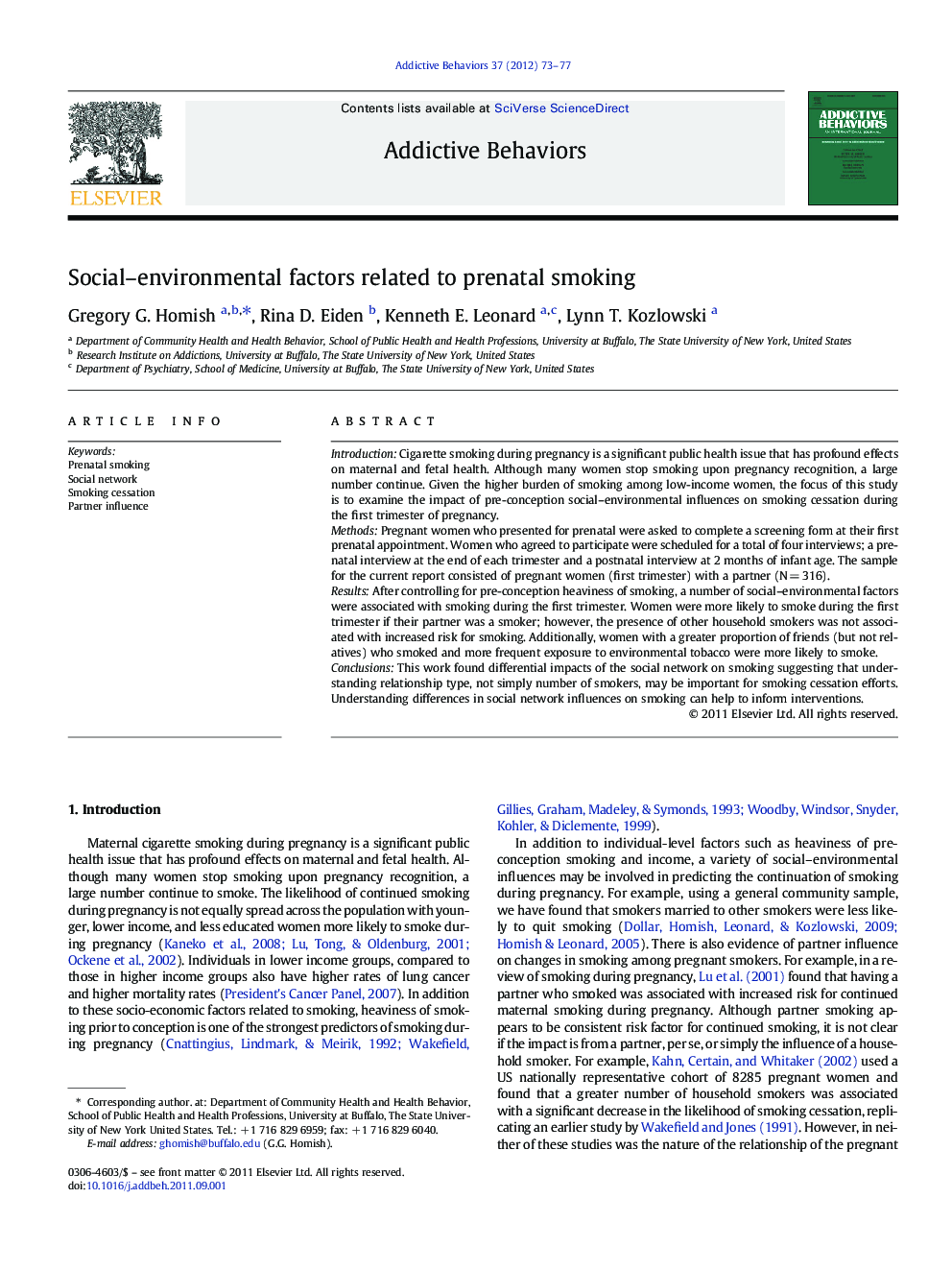| Article ID | Journal | Published Year | Pages | File Type |
|---|---|---|---|---|
| 899587 | Addictive Behaviors | 2012 | 5 Pages |
IntroductionCigarette smoking during pregnancy is a significant public health issue that has profound effects on maternal and fetal health. Although many women stop smoking upon pregnancy recognition, a large number continue. Given the higher burden of smoking among low-income women, the focus of this study is to examine the impact of pre-conception social–environmental influences on smoking cessation during the first trimester of pregnancy.MethodsPregnant women who presented for prenatal were asked to complete a screening form at their first prenatal appointment. Women who agreed to participate were scheduled for a total of four interviews; a prenatal interview at the end of each trimester and a postnatal interview at 2 months of infant age. The sample for the current report consisted of pregnant women (first trimester) with a partner (N = 316).ResultsAfter controlling for pre-conception heaviness of smoking, a number of social–environmental factors were associated with smoking during the first trimester. Women were more likely to smoke during the first trimester if their partner was a smoker; however, the presence of other household smokers was not associated with increased risk for smoking. Additionally, women with a greater proportion of friends (but not relatives) who smoked and more frequent exposure to environmental tobacco were more likely to smoke.ConclusionsThis work found differential impacts of the social network on smoking suggesting that understanding relationship type, not simply number of smokers, may be important for smoking cessation efforts. Understanding differences in social network influences on smoking can help to inform interventions.
► This study examined social-environmental influences on smoking during pregnancy. ► Pregnant women (n = 316) presenting for prenatal care completed a screening form. ► Women were more likely to smoke during the first trimester if their partner smoked. ► The presence of other household smokers was not associated with smoking. ► This suggests that relationship type, not simply number of smokers, may be important.
